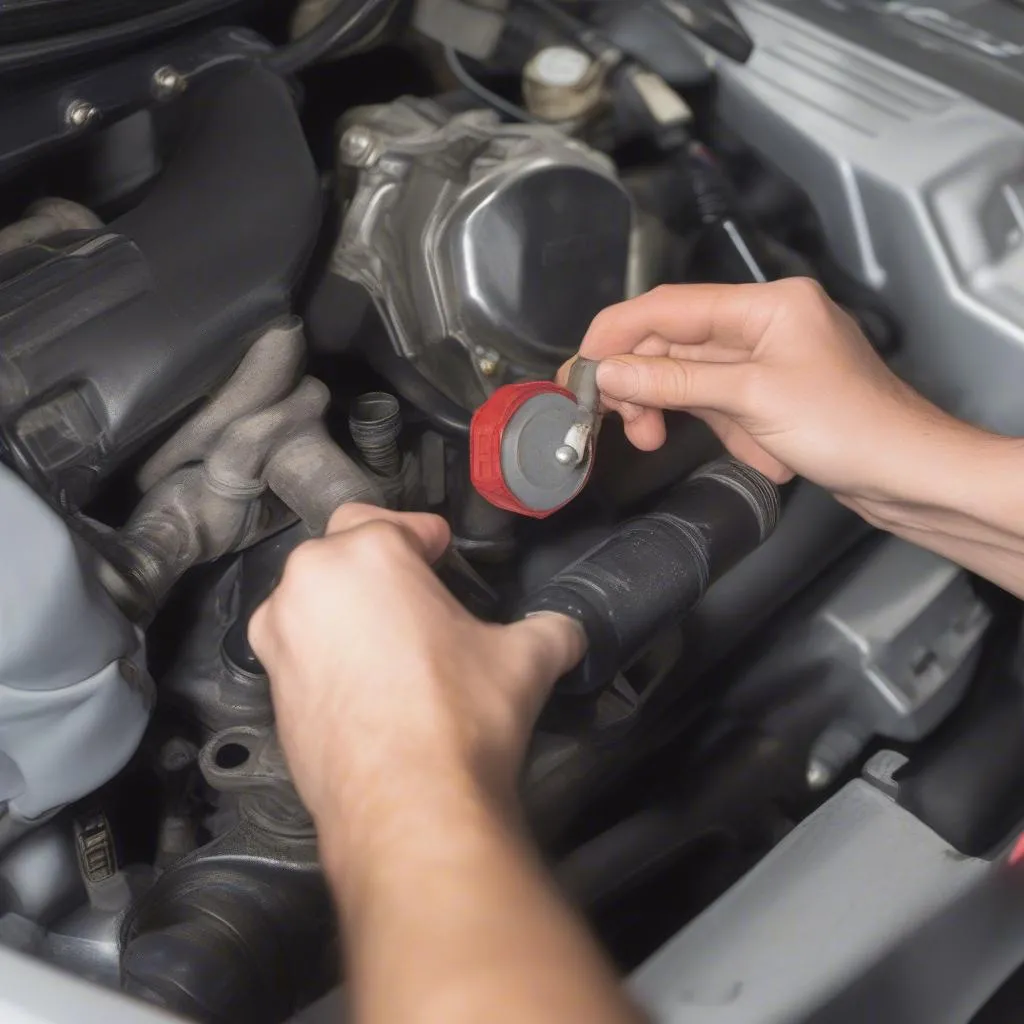Have you ever noticed a sweet, almost syrupy smell coming from your car’s engine compartment? That’s likely a sign of a leaking radiator, and it’s crucial to address it promptly. If you’re dealing with a low radiator fluid level, you might be wondering how to replenish it. In this article, we’ll walk you through the process of adding radiator fluid to your car in a safe and efficient manner.
Why is Radiator Fluid Important?
Radiator fluid, also known as coolant, is essential for keeping your car’s engine cool. It circulates throughout the engine, absorbing heat and carrying it away to the radiator. This process prevents the engine from overheating, which can lead to serious damage and costly repairs.
Importance of Radiator Fluid from a Mechanic’s Perspective
“Radiator fluid is like the lifeblood of your engine,” explains John Smith, a veteran mechanic with over 20 years of experience. “It’s responsible for keeping your engine operating at optimal temperatures, preventing overheating, and extending its lifespan. If your radiator fluid levels are low, your engine is at risk of serious damage.”
How to Add Radiator Fluid to Your Car
Adding radiator fluid to your car is a relatively simple process, but it’s crucial to follow these steps carefully:
Step 1: Locate the Radiator Reservoir
The radiator reservoir, also known as the coolant overflow tank, is usually located near the front of your car, on the driver’s side. It’s often a rectangular or cylindrical plastic container with a cap on top.
Step 2: Check the Fluid Level
Before adding any fluid, it’s important to check the current level. The reservoir will typically have markings that indicate the minimum and maximum fluid levels. If the level is below the minimum mark, you’ll need to add more fluid.
Step 3: Choose the Right Radiator Fluid
It’s important to use the correct type of radiator fluid for your car. Most modern vehicles require a 50/50 mixture of coolant and distilled water. The specific type of coolant can vary depending on your car’s make and model. Consult your owner’s manual or a trusted mechanic for recommendations.
Step 4: Adding the Fluid
-
Cool Down Your Car: Before opening the reservoir, ensure the engine is completely cool. Attempting to add fluid to a hot engine could result in severe burns.
-
Remove the Cap: Carefully unscrew the reservoir cap, paying attention to any pressure release.
-
Pour the Fluid: Slowly add the appropriate mixture of coolant and distilled water to the reservoir, filling it to the “Full” mark.
-
Replace the Cap: Securely replace the reservoir cap after adding the fluid.
** Removing the radiator reservoir cap
Removing the radiator reservoir cap
Step 5: Check for Leaks
After adding the fluid, check for any leaks around the reservoir or radiator. If you notice any leakage, it’s best to consult a mechanic for repair.
Common Questions About Radiator Fluid
1. Can I use tap water instead of distilled water?
While it’s tempting to use tap water, it’s highly discouraged. Tap water contains minerals that can build up in your cooling system and cause corrosion.
2. How often should I check my radiator fluid?
It’s recommended to check your radiator fluid level at least once a month, or more often if you notice any unusual smells or sounds coming from your car.
3. What does it mean if my radiator fluid is cloudy?
Cloudy radiator fluid can be an indication of contamination. It’s best to have your cooling system inspected by a mechanic.
Need Help with Your Car’s Cooling System?
If you’re experiencing issues with your car’s cooling system, or have any concerns about maintaining it, our team of expert mechanics at Diag XCar can help. We provide comprehensive diagnostics and repair services for all types of vehicles.
** Mechanic inspecting car cooling system
Mechanic inspecting car cooling system
Reach out to us via WhatsApp at +84767531508 and let us help you keep your car running smoothly.


